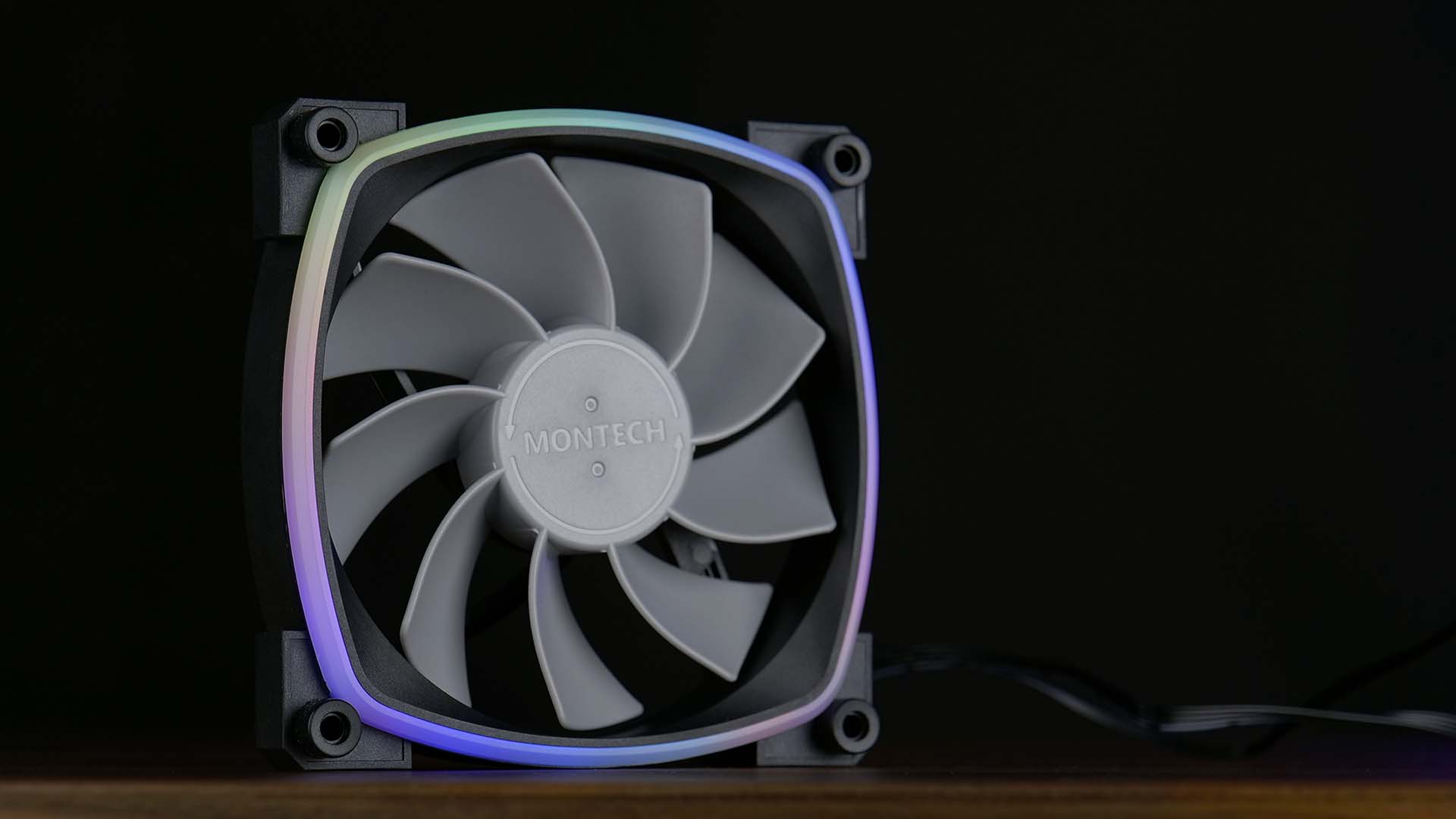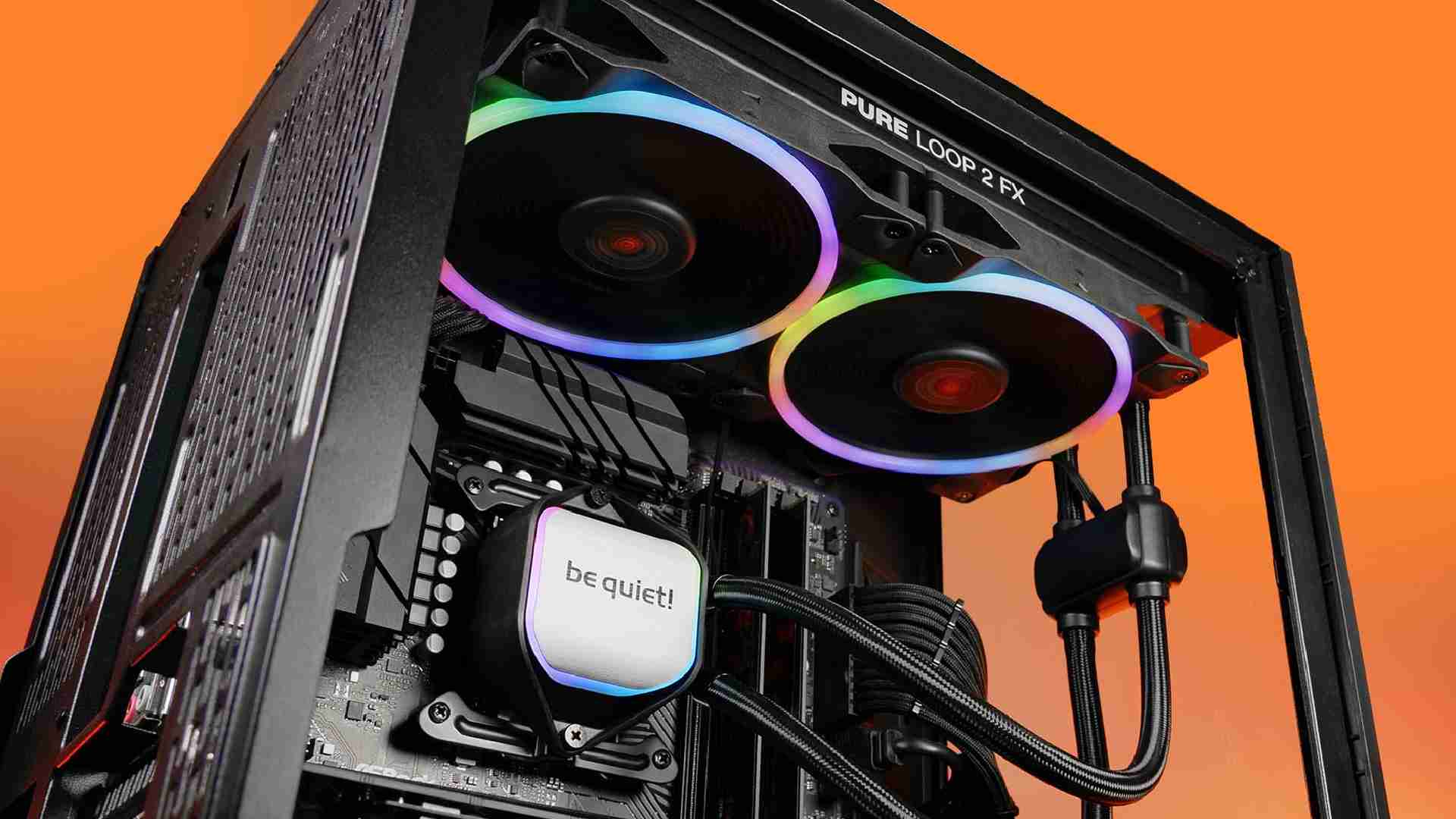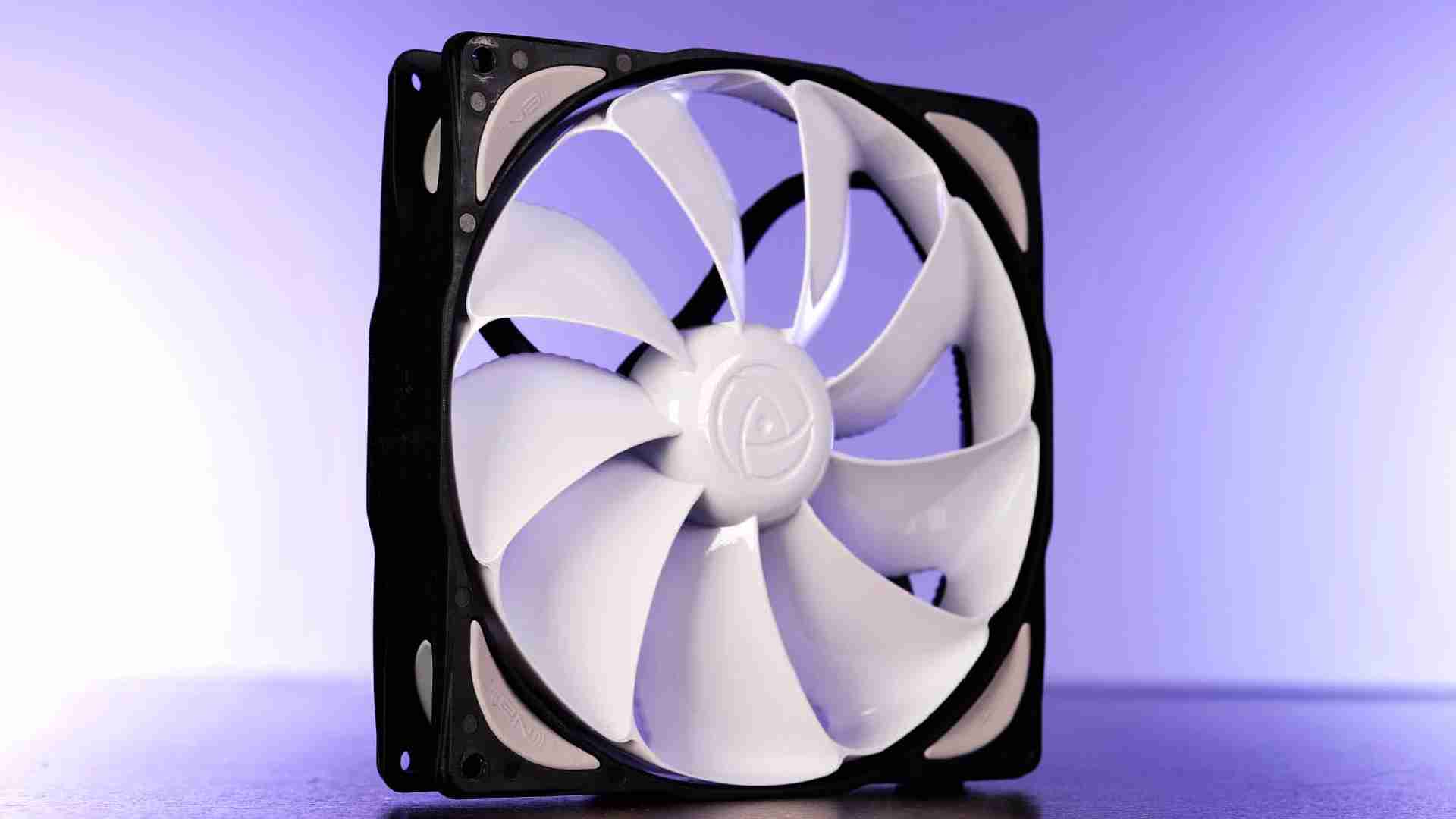Montech RX120
Introduction
Montech's new 120mm case fan line has one special twist to it. Next to the regular AX120 Fan, the RX120 is a reverse spinning fan. This means that the fan blades are reversed so that they blow air out on the pretty side! Let's take a closer look and find out if a reverse spinning fan is performing exactly like the regular one with the same specs!
Positive
- Solid RGB Implementation
- Surprisingly silent on radiators
Neutral
- Build Quality is okay
Negative
- Not the best performance
- Not suited for radiator usage
What's in the Box?

Similarly to the AX120, Montechs' RX120 120mm RGB case fans come in a relatively standard single-fan packaging. Some imagery on each side paired with a short overview of its specs. Once every item has been removed, we will be left with the following items:
- 1x Montech RX120
- 1x Fan Screws
Down below you will find a summary of the RX120's specs.
| Name | Montech RX120 |
| Size | 120x120x25mm |
| Speed | <1600RPM |
| Airflow | <59CFM |
| Static Pressure | <1.8mm/H2O |
| Noise | <27dbA |
| Connection | 4-Pin PWM |
| Cable Length | <500mm each (with included adapter & extension) |
| Bearing | Hydro Dynamic Bearing |
| Motor | - Not specified - probably 4-Pole |
| RGB | Rounded- Square around fan frame |
Installation
Given that the RX120 is a carbon copy of the AX120 with reversed fan blades, installing one is identical to installing an AX120. For both radiator or case fan usage, the fan simply needs to be put into position and then screwed down using either the provided screws or your own radiator screws.

To make the RX120s shine and spin, the attached 500mm long PWM and 3-Pin ARGB cable need to be connected to your motherboard's headers.

However, at this point, we already found a strong negative aspect about these fans. Unlike most fans, neither the PWM nor the ARGB connection has a splitter attached to it. Even if PWM splitters are not common across the whole industry, seeing a single ARGB header without the option to daisy-chain has become rare in recent years.
Appearance
The RX120 being (almost) identical to the AX120, the slightly rounded off cube shape ARGB strip going all around the fan frame still looks like a solid implementation. The LEDs are strong enough to be uncountable and shine strong, even with room light present.

Other than the ARGB implementation, the fan feels "okay" as a whole. Its build quality is definitely on the budget-friendly side, but for a fan being in that category, it feels relatively sturdy for its class.
A small but quickly overlooked difference to the RX120s usage inside the Montech Sky Two case is the rubber around the screw holes. In contrast to the Sky Two case, the individual fans do come with vibration-absorbing rubber adding to the fans value.

The most interesting point about the fan's appearance would still be the fan blade design. The RX120 still uses the same 9 short wing design seen on the AX120, however, due to its reverse nature, all of the blades are reversed. Looking at it, it simply looks like a fan from the back, but while looking at it from the front.
As a small addition, the reverse version has two little arrows on the central hub reminding you of the rotation direction and that it is a reversed fan.
Benchmark
We benchmarked the Montechs AX120 on both test setups. Once focused on pure radiator performance using an 80mm thick radiator. To determine the performance of a fan, the above ambient temperature of the water exiting the radiator is measured.
The second scenario is a raw case benchmark. For this, we measure the CPU temperature of a system using a Noctua NH-P1 passive cooler. In this case, the fans are responsible for recycling the air within the case.
Case

Allowing the RX120 to spin at max speed in a case fan environment allowed the CPU to stay at 46.6°C above ambient. Unlike what we expected, as a case fan, the RX120 performs quite significantly worse than the regular AX120 counterpart.

Lowering the fan speed in 10% steps revealed that the noise-to-performance ratio of an RX120 is an exact copy of the AX120, but offset by a degree and a half. For the worse.
Radiator
Although the AX120 wasn't particularly amazing as a radiator fan, the RX120 managed to be even worse. Keeping the water at 16.9°C, the RX120 makes the end of the list.

To our very surprise, the Noise-to-Performance ratio of an RX120 on a radiator is nothing that we expected.

Thanks to the fan now pushing the air through the radiator in a different way, the maximum noise went down significantly. Even if the noise-to-performance ratio is still far behind the AX120 due to it's heavily reduced performance, the noise went down too.
Conclusion
Unlike our expectations, a reverse spinning fan is not performing the same as its not-reversed counterparts, even if the spec sheets are claiming the same performance metrics.
This can be due to a lot of reasons, the one that is the least measurable, and probably the cause, is that the air exits the fan blades in a different way.

However, no matter the reason, the end result is, the RX120 is performing significantly behind an AX120 in both Case and Radiator use cases.

As the AX120 already did not convince us enough to recommend it as a stand-alone product, the RX120 does it even less.
However, similarly to the AX120, we believe that if you already own a Sky Two case, there is no wrongdoing in getting a single RX120 to fill the left-over spot in the bottom of the case.

If you are not in that one single-use case, we would recommend taking a regular fan and reversing it, or looking for other alternatives. The performance and noise penalty of the RX120 is too severe compared to other fans to fill a completely blank case with a bunch of them.


be quiet! Pure Loop 2 FX 280 Review
As part of their 20th Anniversary be quiet! re-released some of their long-standing products as part of a special 20th FX ser
Read More
NoiseBlocker eLoop B14-PS Review
NoiseBlocker eLoop B12-P fan was already a surprise considering its age. Now we are going to take a closer look at the B14-PS
Read More
AMD Ryzen 7950X Review
Its time to take a closer look at the biggest and most powerful Ryzen 7000 Chip, the 7950X. Lets see if it is able to keep th
Read More
Xilence LQ240Pro Review
So far, Xilence AIOs have been nothing but a pleasant surprise. Now its time for their newest LQ240! Lets take a closer look
Read More
